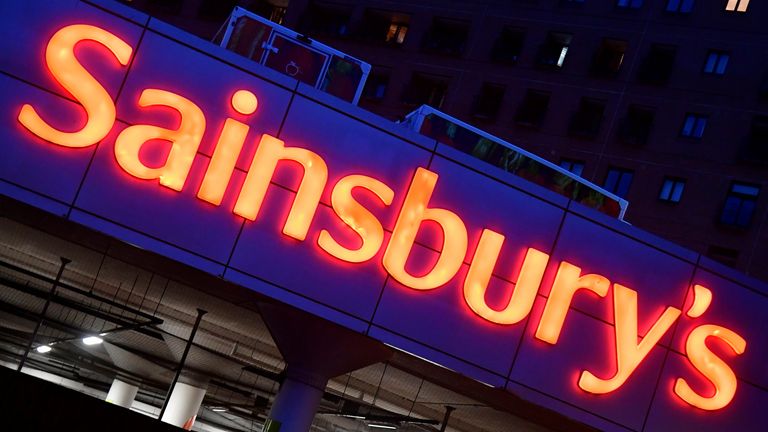If you wear an engagement ring, it may well be one of the most valuable single items you own.
The average price of an engagement ring in the UK is around £2,000, though prices can often reach £10,000 or more.
As the owner of a high-value piece, you may be keen to ensure it is covered should you lose it, damage it or have it stolen.
But what do you need to think about when insuring a valuable item of jewellery? And how do you know which is the best insurance provider to choose?
Here, Telegraph Money explains what to look out for, and will cover the following:
- Why you might need engagement ring insurance
- How to arrange engagement ring insurance
- Factors to consider when choosing engagement ring insurance
- How to find the best engagement ring insurer
- FAQs
Why you might need engagement ring insurance
Jewellery often has a high financial and sentimental value. This is especially true in the case of family heirlooms.
Having an insurance policy for your particular item can give you the peace of mind of knowing you are covered for loss, theft or damage.
Without it, you’ll have to foot the bill of fixing or replacing the piece from your own pocket.
Ceri McMillan, home insurance spokesperson for Go.Compare, said: “It may not be the most romantic thing to be thinking about, but from the moment an engagement ring is in your possession – whether you are proposing or being proposed to – making sure you have an insurance policy in place to cover it is vital.”
How to arrange engagement ring insurance
If you have an engagement ring you want to insure, here’s what you’ll need to think about to make sure your insurance policy covers it.
Check your existing cover
In the first instance, it’s worth checking whether the ring is already covered as part of your existing home contents insurance policy. After all, you don’t want to end up paying twice for cover if you don’t need to.
Find out the ‘single item limit’
Be sure to check what limits apply to your standard home policy, as when it comes to high-value jewellery and rings, there is usually what is known as a “single item limit”.
This is the maximum amount your insurer will pay out to repair or replace any one lost or stolen item – unless it is “specified” or “named” as a high-value item on your policy schedule. Typically this limit falls somewhere between £1,000 and £2,000 but it can differ between insurers and policies.
Consider individual item insurance
If the value of your ring is more than the “single item limit” on your home insurance policy, you will need to think about individual item insurance.
This offers extra protection for specific high-value items. Without this cover – also known as “high-value item insurance” or “specified item insurance” – you risk your policy not paying out.
Look at a specialist policy
If your current insurance doesn’t cover for jewellery – or only offers limited cover – you could consider taking out a standalone policy.
Ms McMillan said: “This is specifically designed to protect you financially in the event of loss, theft or accidental damage to the ring – and possibly replacing or repairing an expensive piece of jewellery. Some policies may also cover things such as the loss of diamonds or stones.”
The key, as always, is to check the small print.
Factors to consider when choosing engagement ring insurance
There are a few steps you ought to follow before opting for a particular policy.
Get your ring valued
The first thing you need to do when thinking about cover for your beloved engagement ring is to get it valued.
While this won’t necessarily be the same as the purchase price, it will help you establish the correct replacement value for insurance purposes.
You may want to speak to a professional valuer who will be able to give you a formal document setting out the value of the piece. This might include details such as the type of metal, cut, weight, colour and clarity of stones.
Be sure to keep valuation certificates and also take photos of your ring as this can help insurers to process a claim more easily, or to help have the item recreated.
Without a valuation, there’s a risk that if you need to make a claim, the true value of your ring could be under-assessed. You could even find an insurer refuses to settle a claim.
Getting jewellery valued should not be viewed as a one-off exercise. You need to have up-to-date valuations of your ring – ideally every few years – and get insurance policies updated in line with this. This is especially important for larger diamonds.
Matthew Ashton, director of insurance broker Stanhope Cooper said: “Some insurance products are restrictive, only accepting approved valuations if they are less than two or three days from the inception date. By contrast, other insurers are more liberal, accepting valuations which are up to five years old.”
The key is to check this with the provider so you know where you stand.
Find out how will it be replaced
You need to find out how your ring would be replaced in the event of a claim.
Check if the basis of settlement is vouchers from a list of select mainstream jewellers, or if repairs are restricted to certain jewellers.
Mr Ashton said: “What you’re ideally looking for is an insurer enabling you to get a like-for-like replacement, along with the freedom to get the item repaired at the same jeweller who made or designed it.”
What exactly does the policy cover
Features to look for include:
- Cover for accidental damage, theft and accidentally losing the item.
- Cover for loss of stones.
- “Away from home” cover – meaning your ring will be covered if you go abroad on holiday.
- Be aware that most policies will exclude cover for things such as cosmetic damage (such as scratches and dents) as well as general wear and tear.
Check for a ‘clasps and settings’ clause
Some policies may include a “clasps and settings” clause.
Kevin Morton, head of Zurich Private Clients, said: “For very expensive items there may be a stipulation to have the ring inspected regularly by a qualified expert to ensure clasps and settings remain secure.”
A clause like this is especially likely to apply to solitaire diamond engagement rings.
Emma Myrie, underwriter at specialist home insurer Homeprotect, said: “Often engagement rings are ‘single stone,’ and the majority of the value is within that. If that stone is lost because the setting is damaged, it would be a total loss.”
Read about storage requirements
Think about when and where you’ll wear the ring – and where you’ll keep it when you’re not wearing it.
Hannah Davidson, senior underwriting manager for insurer Aviva, said: “Some insurance policies may stipulate that specific items of value need to be stored in a safe when not being worn or used. There may also be additional requirements around home security, such as an alarm system.”
The key is to check with potential providers whether they have any special terms on their policies.
If you have a high-value ring, a safe can potentially pay for itself in terms of the saving you get on your premium. You just need to make sure it’s professionally installed.
Watch out for a ‘personal custody clause’
If this applies, the ring may only be covered while you’re wearing it. This means that if, for example, you take it off when you head out to a gym session, the ring won’t be covered.
While such an endorsement can help keep your premium down, you need to weigh this up against your lifestyle.
Look for an uplift
In a market where the value of diamond and precious metals is rising, you need to take care not to end up with insufficient cover in place. If this happens, you may not get a full payout in the event of a claim.
Shop around and you will find certain insurers have features in place to prevent this from happening.
For example, with NFU Mutual’s tailored policies for high-value items, there’s a safeguard against underinsurance, as the firm covers up to 150pc of the insured amount (provided a professional valuation has taken place within the past three years).
Elsewhere, Zurich offers high net-worth clients an “automatic annual increase” in the amount the ring is insured for.
Do your research
Make sure the insurer has a track record of paying claims and supporting customers when they do need to claim.
Dawn Blazier, head of high-net worth insurance at NFU Mutual, said: “Losing or damaging a treasured item is a stressful time for anyone, so you want to be sure that if the unfortunate does happen, your insurer will be there to support you.”
The Financial Conduct Authority produces a “value measures” report each year which provides data on “claims acceptance rates” and “claims complaints” as a percentage of claims. This can be a valuable tool when choosing your insurer.
Ms Blazier added: “As engagement rings are such important sentimental pieces, it’s always worth checking what you are covered for – as well as the support offered – rather than simply opting for the cheapest policy.”
How to find the best engagement ring insurer
There are a number of different options when it comes to finding an insurer.
Firstly, as we’ve mentioned, you might be able to add the ring to your home insurance policy – as long as it doesn’t exceed the single item limit.
If you have a particularly high-value ring, you may benefit from a high-net worth policy from a specialist insurer. Nick Bick is from Jewellery Replacement Claims (JRC), a diamond merchant and jewellery manufacturer in Hatton Garden, London.
The firm validates jewellery claims and replaces and repairs lost and stolen items for major insurance companies, loss adjusters and brokers.
Mr Bick said: “A lot of the high street mainstream insurance companies will not insure any items over £10,000 and will have a low single item limit, meaning a specialist company is very much needed. One of the advantages of a high net-worth policy is the fact high-value rings will be covered, and the ‘single item limit’ could be a lot higher, at around £20,000 – or even higher still.”
With a high net-worth policy, you should also get access to a trusted network of repairers and valuers; in addition, you should be covered worldwide.
According to Mr Bick, established names to consider include the likes of Aviva, Axa and Chubb.
It may be worth speaking to a broker who specialises in jewellery insurance and high net-worth policies. Firms include the likes of Howden, TH March and Stanhope Cooper.
Not only can a broker give you impartial guidance, helping you make a more informed decision, they can help make the claims process as smooth as possible for you.
Steve Moores, client director at insurance broker Howden, said: “We’re always happy to give advice so that you understand the value in the insurance policy you’re buying. Cheap is almost certainly not the best option. Let a broker do the work: compare the cover, and explain how a broker’s claims team can help you.”
Table of ‘best’ engagement ring insurance 2024
While it’s hard to pin down the absolute “best” engagement ring insurers per se, broker Stanhope Cooper has compiled a table showing you how the offerings from the three insurance providers on its panel stack up.
The three firms are: Chubb, Ant Insurance and SCOR. (Note that this panel has been assessed to cater for the “£5,000 ring” up to the “£100,000,000 jewellery collection.”)
FAQs
What insurance do I need for an engagement ring?
When looking to insure an engagement ring, you want to find a policy which includes cover for a range of situations.
Kevin Morton, head of Zurich Private Clients, said: “This should include accidental loss, damage, stone displacement and theft. This is particularly important for items that tend to be worn 24-7 all through the year.”
You also need to be aware that jewellery value often increases year on year, meaning there’s a risk of finding yourself underinsured. If this is the case, your payout may be a lot less than your ring is worth.
Nick Bick from Jewellery Replacement Claims (JRC), said: “Many ‘specified items’ are not insured at a high enough level. So, when a claim is made, they will get paid out a lot less than the correct – and current – market value.”
With this in mind, it may be worth searching for a policy which safeguards against underinsurance – or one which gives an uplift in value following a valuation; typically one of these will last for between one and three years.
How much does engagement ring insurance cost?
The price you pay will vary depending on a number of factors, including the insurer you choose, the policy you go for, the value of the ring you are looking to insure – as well as where you live (and whether this is a high-theft area).
Should I insure a £3,000 ring?
Yes. Any high-value item of jewellery needs to be insured. This is especially important for pieces which exceed the single-item limit on your existing home insurance policy – which may be as low as £1,000.
Without the right level of insurance in place, you could end up seriously out of pocket should you need to make a claim for damage or loss.
Can I add an engagement ring to my existing insurance?
If you already have home contents insurance, it’s worth speaking to your insurer to find out if you can add cover for your ring to your existing policy. But you need to be aware that there is typically a limit which could be around £1,000 for single items on most policies – so you need to check the fine print to see if you’re covered.
Also note that with a standard insurance policy, your engagement ring may not be covered “away from home”.
Scouring the terms and conditions is crucial.
Disclaimer: The copyright of this article belongs to the original author. Reposting this article is solely for the purpose of information dissemination and does not constitute any investment advice. If there is any infringement, please contact us immediately. We will make corrections or deletions as necessary. Thank you.



